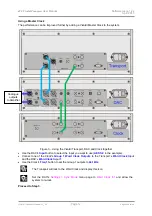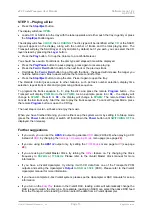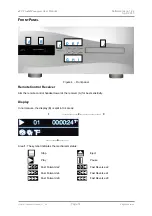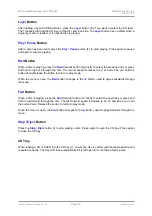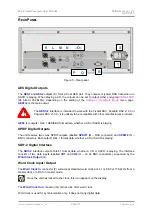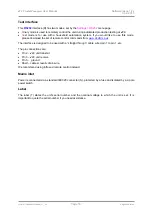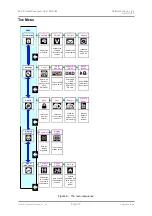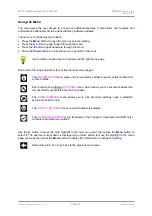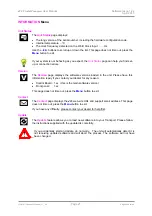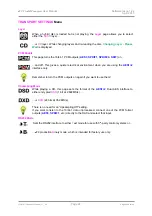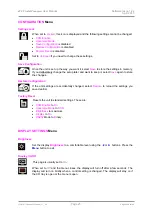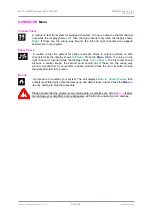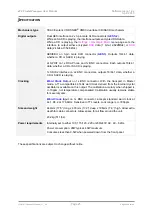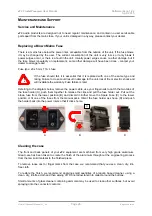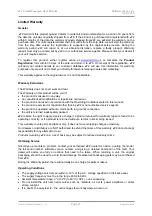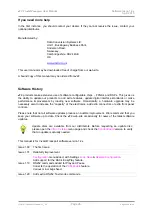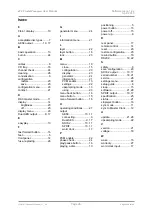
dCS Vivaldi Transport
User Manual
Software Issue 1.2x
April 2015
Vivaldi Transport Manual v1_2x
Page 26
English
version
6B
M
AINTENANCE AND
S
UPPORT
Service and Maintenance
dCS
audio products are designed not to need regular maintenance, and contain no user serviceable
parts apart from the mains fuse. If your unit is damaged in any way, please contact your dealer.
Replacing a Blown Mains Fuse
There is a mains fuse below the power inlet, accessible from the outside of the unit.
If the fuse blows,
it may be changed by the user. The current consumption of the unit is very low, so it only blows if
power surges occur, or there is a fault in the unit. Usually power surges cause no other damage, but if
the fuse blows repeatedly on replacement, some other damage will have been done - contact your
dealer to arrange repair.
Fuse type: 20 x 5mm T 1A L fuse
!
If the fuse should fail, it is essential that it is replaced with one of the same type and
rating. Failure to do so could result in damage to the unit, risk of fire or electric shock and
will invalidate the warranty. Fuse failure is rare!
Referring to the diagram below, remove the power cable, use your fingernails to catch the two tabs of
the fuse holder (A), push them together to release the clips and pull the fuse holder out. Pull out the
blown fuse from the lower position (B) and discard it. Either move the Spare Fuse (C) to the lower
position or fit one of the fuses from the manual pack. Orient the fuse holder as shown (D) and push
the holder back into the power inlet so that it clicks home.
A B D
Cleaning the case
The front and back panels of your
dCS
equipment are machined from very high grade aluminium.
Great care has been taken to create the finish of the aluminium throughout the engineering process
from the raw solid material to the finished piece.
To remove loose dust or finger marks from the case, we recommend that you use a clean, dry, lint-
free cloth.
To restore the finish, we recommend applying small quantities of a lanolin based cleaner, using a
clean, dry, lint-free cloth and then wiping off. Do not allow lanolin to collect around the buttons.
Small amounts of glass cleaner containing ammonia may be used to clean other surfaces, but avoid
spraying onto the connector contacts.
C

